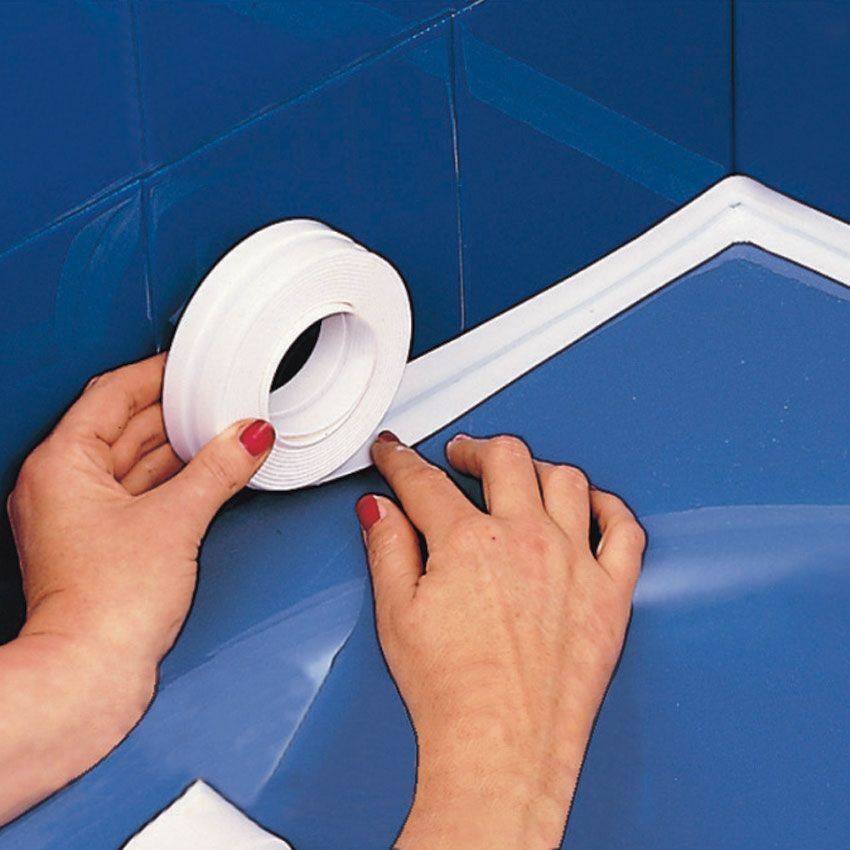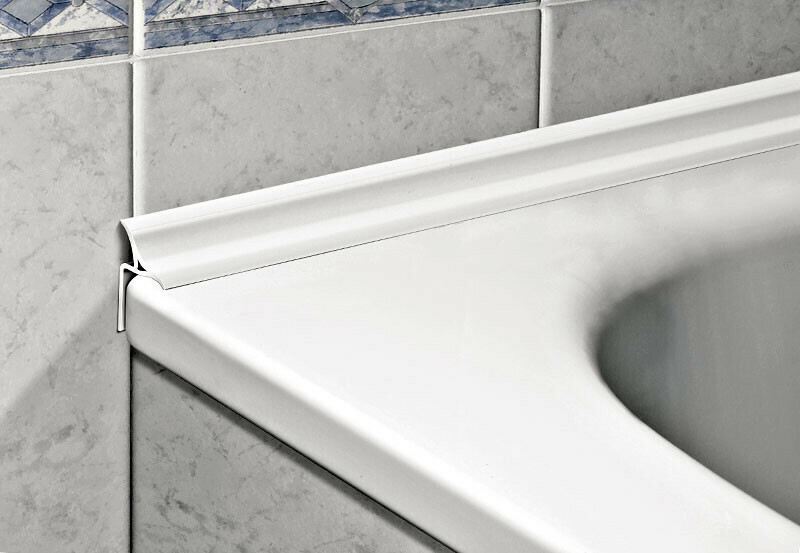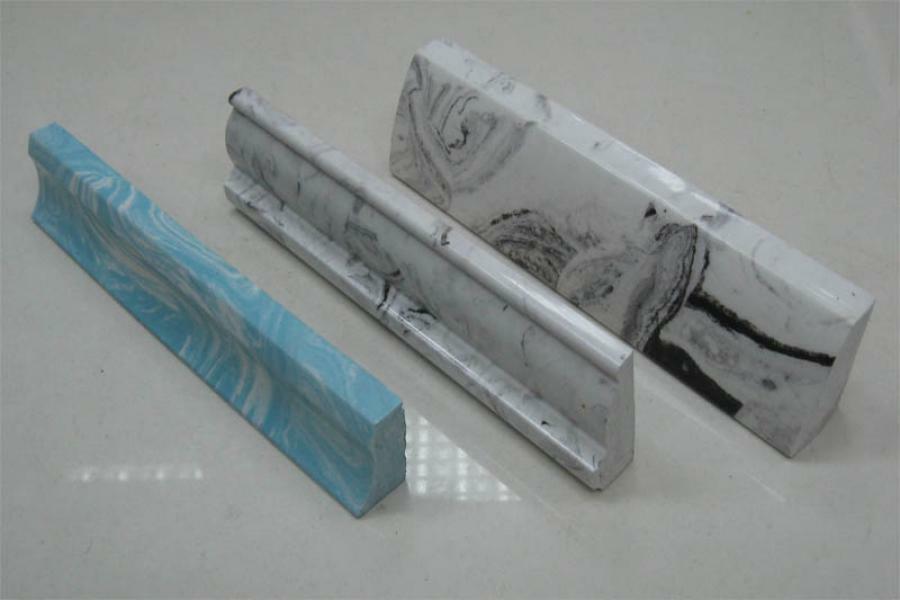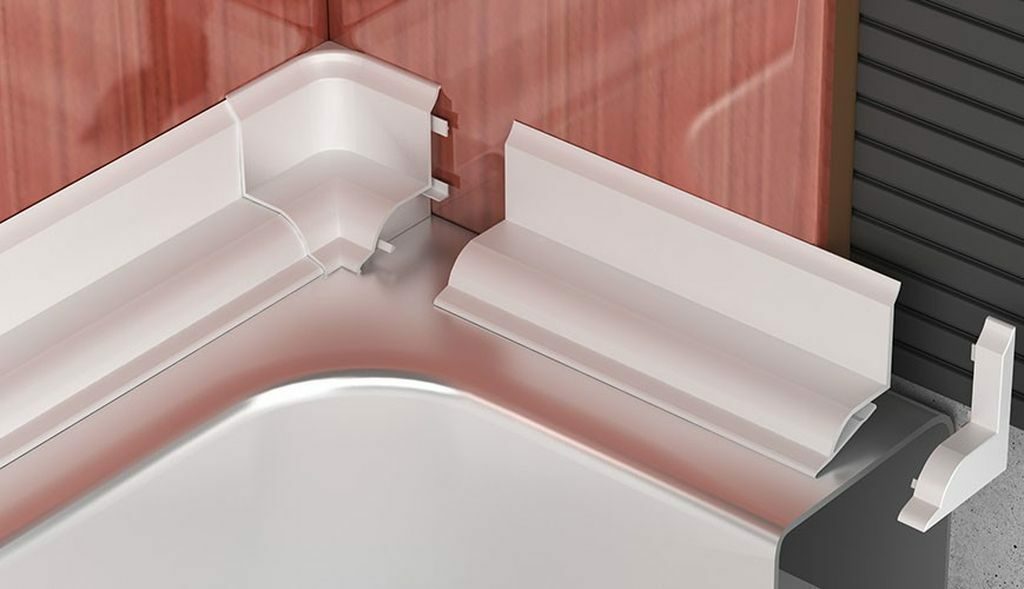The bathroom is the room with the highest moisture content. When carrying out work on the installation of a bathroom, sink or shower stall, it is important not only to properly fix the plumbing equipment, but also to make all seams and joints airtight. The gap between the wall and, for example, the bathroom is inevitable in any case.
With insufficient sealing or violation of technology, such a gap will allow moisture to pass through, which will accumulate under the bathroom. Water flowing down to the floor may well seep and leave unpleasant "surprises" in the form of streaks on the walls and ceilings of neighbors whose apartment is located on the floor below. And for the owners of such a bathroom, this does not bode well, because water, accumulating under the structure, will become a source of mold and mildew formation. To prevent negative consequences, it is important to immediately follow the installation technology and use bath curbs.
Choosing a bath curb
The content of the article
- Choosing a bath curb
- General rules for laying
- How to properly glue the border on the bathtub
The choice of products is endless, so it is sometimes difficult to understand what exactly needs to be bought in a building materials store. Bath curbs are no exception. What is the difference between synthetic and mineral products, and which side will last longer?
Choosing a bath border should be based on only two main criteria. First, you should consider the size of the gap (distance from the bath to the adjacent wall). Secondly, when choosing a material, it is worth considering which side will look more aesthetically pleasing:
-
Flexible self-adhesive tape. It will be a good choice for those who want to give the bathroom a finished look without any experience in decoration or any additional equipment. Such a product is a plastic skirting board, which can be found in the store in the form of three-meter rolls - they are very flexible. The inner side of the tape is impregnated with a self-adhesive sealant. It is not difficult to work with it: the protective layer is removed and the tape is already ready for fastening. The assortment is also represented by angular and curly ribbons. Installing flexible self-adhesive tape is a budget solution that obviously won't hit your pocket. But it is worth noting the existing disadvantages, along with the advantages: this finishing option cannot be called durable, the tape is only a temporary solution that can be used only for a couple of years. Over time, the tightness weakens and the color of the product changes.

-
Plastic border. More dense in structure, but also easy to install. The product is equipped with silicone inserts, which provide better fastening and tightness. A plastic product can last no more than 6 years, but over time it turns yellow, becomes sensitive to the use of household cleaning agents, cracks appear on it from mechanical damage.

-
Mineral fittings (ceramics, marble, granite). A more expensive and high-quality option for finishing a bathroom, the service life of which is practically unlimited. Such a border is not susceptible to mechanical damage, to the effects of household chemicals (detergents), and the color remains unchanged. Sometimes the borders come complete with tiles that match the color and design.

Reference! Self-adhesive tape and a plastic product are more budget options, since they are made of polymer materials and are easy to install. Mineral products are more expensive, require special tools and installation skills, but are ideal for bathrooms with sophisticated designs.
General rules for laying
If the stage with the selection and purchase of a border has already been completed, then it becomes necessary to prepare the surface and carry out additional work, and for the installation itself, you need to purchase glue.
Curb glue is required for the installation of ceramic or plastic products. The main selection criterion is that you should give preference to a sealant, rather than silicone glue for installation, because over time it darkens and loses its properties. The wrong choice of glue can lead to flaking of the curb. Due to the appearance of microcracks, it is necessary to change the adhesion layer every 4–5 years, remove and disinfect the fittings.
But you can do without such measures if you choose a special-purpose adhesive during installation: aquarium, sanitizing or hydrophobic. Such material will cost more, but it will exclude periodic expenses for cosmetic repairs and sanitary and hygienic processing.

Good preparation of the bathroom for work is the key to success and a long service life of the curb. If the bathtub is new, just wipe the edges from dust or other contaminants. If the old curb was dismantled, then first you need to remove the remnants of the sealant used in the previous installation - an abrasive material will help with this.
The bathroom itself also requires additional cleaning with detergents. Dry and degrease the surface with alcohol before installing a new curb.
How to properly glue the border on the bathtub
Attaching self-adhesive tape is the simplest finishing option. Before installing, cut the tape into pieces, leaving an additional 1–1.5 cm at the corners.
Heating with a hairdryer will help to achieve the greatest elasticity. It is better to glue it from the corners, remove the protective tape in small sections, and press the border itself tightly, in the same direction along the entire perimeter. You will need a sealant to treat your incisions. After installation, you cannot wet the new curb for another 24 hours.
A plastic border will require more use of glue-sealant, in terms of installation it is similar to a self-adhesive product, it will take a day and a half to dry.
The ceramic border requires preliminary isolation of the gap between the bathroom and the wall, it is installed according to the general principle - from the corner. After the sealant has dried, an intermediate stage is required - applying tile adhesive over the curb. After a day, all excess is washed off, the bath remains for another day to dry. The seams between the parts of the curb are treated with grout.
Subscribe to our Social Networks


